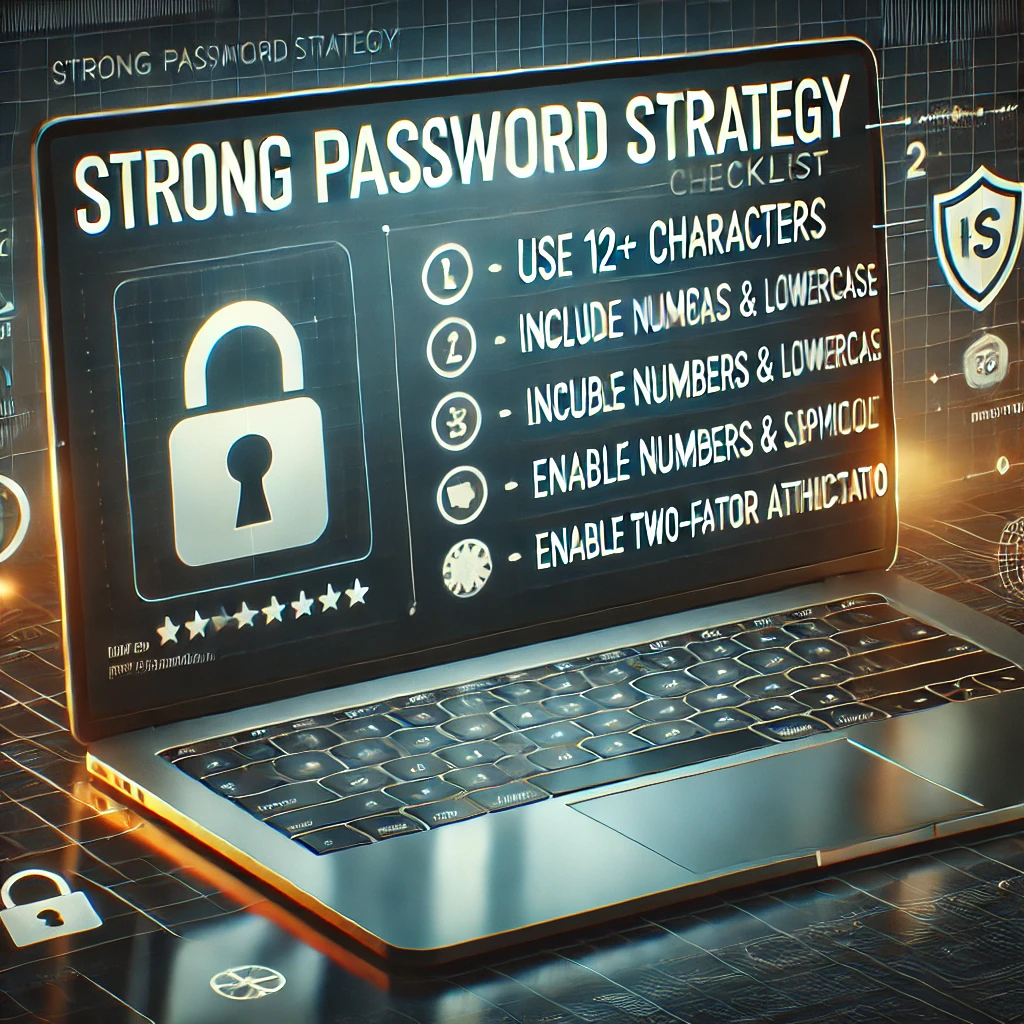In today’s digital world, passwords are the first line of defense against cybercriminals. However, many people still use weak or reused passwords, making them an easy target for hackers.
💡 Did you know? 81% of hacking-related breaches happen due to stolen or weak passwords (Verizon Data Breach Report).
Hackers use brute force attacks, phishing, credential stuffing, and keylogging to steal personal data, banking information, and even social media accounts.
So, how can you create an unbreakable password strategy? In this comprehensive guide, you’ll learn:
✅ How hackers crack passwords
✅ How to create an ultra-secure password
✅ How to manage passwords without forgetting them
✅ Best tools to protect your accounts
Let’s dive in and secure your online identity! 🚀
🚨 How Hackers Steal Your Passwords
Before you learn how to protect your accounts, it’s important to understand how hackers crack passwords:
1️⃣ Brute Force Attacks
Hackers use powerful software to try millions of password combinations per second. Weak passwords like 123456 or password can be cracked in less than a second!
2️⃣ Phishing Attacks
You receive an email pretending to be from Google, Facebook, or your bank, asking you to “verify” your password. Once you enter it—boom, it’s stolen!
3️⃣ Credential Stuffing
If you use the same password for multiple websites, a hacker who steals it from one site can use it to access all your other accounts.
4️⃣ Keylogging Malware
Malware can secretly track what you type on your keyboard, stealing your passwords as you enter them.
💡 The solution? Use strong, unique passwords and extra security layers!
🛑 Common Password Mistakes That Put You at Risk
Many people unknowingly make mistakes that make hacking easier. Avoid these at all costs:
❌ Using weak passwords – 123456, password, admin, or qwerty
❌ Using personal info – Birthdays, pet names, or phone numbers are easy to guess
❌ Reusing passwords – If one gets hacked, all your accounts are at risk
❌ Short passwords – Less than 12 characters? It’s too weak!
❌ Saving passwords in browsers – Hackers can extract them easily
❌ Not using Two-Factor Authentication (2FA) – A big security mistake
🔹 Solution: Follow the steps below to create a bulletproof password strategy.
🔐 7-Step Strong Password Strategy
1️⃣ Use Long & Complex Passwords
A strong password should be at least 12-16 characters and contain:
✅ Uppercase letters (A-Z)
✅ Lowercase letters (a-z)
✅ Numbers (0-9)
✅ Special symbols (!, @, #, $, etc.)
💡 Example of a strong password: K9*v!P#x3mZ$Q!7
🚫 Avoid common words like password123, iloveyou, or abcd1234.
2️⃣ Use Passphrases Instead of Passwords
Instead of a random mix of characters, use a passphrase—a combination of words that is easy to remember but hard to hack.
💡 Example: Sunset!Piano#Laptop$GreenTree
📌 Why? Passphrases are:
✔️ Longer (harder to crack)
✔️ Easier to remember
✔️ More secure
3️⃣ Never Reuse Passwords
If you use the same password everywhere, a single data breach can expose all your accounts.
🔹 Solution: Use a unique password for each site.
💡 Tip: If remembering passwords is hard, use a password manager (explained below).
4️⃣ Use a Password Manager
A password manager securely stores all your passwords and auto-fills them when needed.
🔹 Best free password managers:
✔️ Bitwarden (bitwarden.com)
✔️ NordPass (nordpass.com)
✔️ Dashlane (dashlane.com)
These tools generate strong passwords and store them safely.
💡 Example: Instead of remembering G$7p!K9#vX3mZQ!, you only need to remember one master password for your password manager.
5️⃣ Enable Two-Factor Authentication (2FA)
Even if a hacker steals your password, 2FA prevents them from logging in.
💡 How does 2FA work?
When you log in, you’ll need to enter:
✅ Your password
✅ A one-time code (sent to your phone or generated in an app)
🔹 How to enable 2FA?
1️⃣ Go to account settings (Google, Facebook, etc.)
2️⃣ Find Security Settings → Two-Factor Authentication
3️⃣ Choose SMS or an authenticator app (like Google Authenticator)
📌 Authenticator apps are safer than SMS because hackers can intercept text messages.
6️⃣ Avoid Storing Passwords in Your Browser
Browsers like Chrome, Firefox, and Edge offer to save your passwords, but this is risky. If your device is hacked, so are your passwords.
🔹 Solution: Use a password manager instead.
7️⃣ Be Aware of Phishing Scams
Cybercriminals try to trick you into giving them your password through fake emails or websites.
🔹 How to spot phishing scams?
✔️ Look for spelling mistakes & suspicious links
✔️ Never click on links in emails from unknown senders
✔️ Always check the website URL before entering your password
💡 Tip: If an email asks you to “verify” your password, don’t trust it!
🚀 Final Security Tips: How to Keep Your Passwords Safe
✔️ Update passwords every 6 months – Prevent unauthorized access
✔️ Use different passwords for banking & email – These are high-risk accounts
✔️ Enable login alerts – Get notified of suspicious login attempts
✔️ Never share passwords – Not even with close friends or family
✔️ Use a secure email for password recovery – Preferably with 2FA enabled
🔎 Conclusion: Stay One Step Ahead of Hackers!
By following these password security strategies, you can protect your personal data, financial information, and online accounts from cyber threats.
💡 Want to level up your security? Start using a password manager, enable 2FA, and stay alert for phishing scams.
✅ Your Turn!
👉 Do you use a password manager?
👉 Have you ever faced a password hack?
💬 Share your thoughts in the comments below! Stay safe online! 🔐🚀
🚀 You May Like :
🔗 Essential Cybersecurity Tips to Secure Your Digital Life
🔗 Excel Made Easy: Key Functions & Formatting Techniques(Ch-2)
🔗 Your Phone Battery Drains Fast- How to Fix It
![]()






One thought on “Strong Password Strategy: How to Keep Hackers Away from Data”